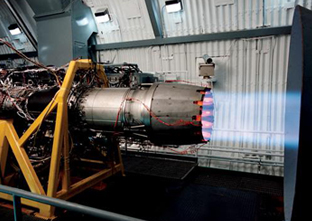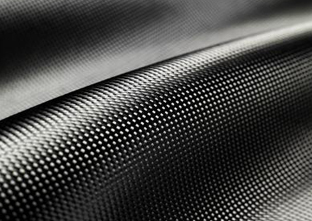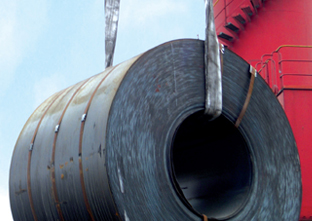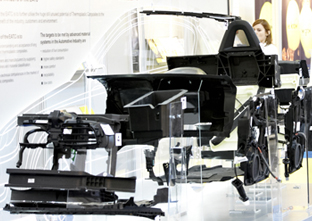Boosted polymers for increasingly targeted performances

The highest performance polymers are known for their resistance to high continuous use temperatures. Anything else ?
The family of high performance polymers comprises of fifteen or so materials... Most were discovered more than half a century ago, and so aren't really new. But together they form a powerful basis for innovations through the many improvements made to them over the past fifteen years.
It was their resistance to high continuous use temperatures ranging from 150°C to 260°C that first attracted interest from the motor manufacturing, aerospace and other industries that were looking for substitutes for metal.
Nowadays, these polymers are constantly being improved to meet specific criteria: fire behaviour, ease of use, colouring, fluidity, wear resistance in sliding blocks and lining assemblies, load stresses and even biocompatibility ...

Is there a theoretical limit to the thermal resistance of petroleum-based polymers ?
 A fundamental research chemist would tell you that it is theoretically possible to extend the current limits of thermal stability well beyond 400°C.
A fundamental research chemist would tell you that it is theoretically possible to extend the current limits of thermal stability well beyond 400°C.
An industrial research chemist, by contrast, would see no point at present in a race to push back the boundaries of thermal performance in metals or ceramics. He would be looking more to improve the service performance of his polymer under current standards, such as by slowing its degradation or enhancing its long-term stability.
So, basically, innovation in this area is one of small peripheral improvements ?
 In a way, yes. Development moves on in small qualitative leaps forward. But it is an ongoing process, driven by competition between the few manufacturers with expertise in the range of high performance polymers currently on the market.
In a way, yes. Development moves on in small qualitative leaps forward. But it is an ongoing process, driven by competition between the few manufacturers with expertise in the range of high performance polymers currently on the market.
Also, the financial stakes in these highly targeted advances are high, when you think that the price of most high performance polymers is between €40 and €80 per kilo, which is 10 to 20 times that of mass-produced plastics.
Sometimes all it takes is an improvement to the processing conditions of a resin to open up new niches for applications in aeronautics and effectively double the amounts with prices of €150 to €180 per kilo.
Doesn’t this sort of incremental innovation limit the discovery of new plastic materials ?
I don't think so. Plastics development operates at two speeds: a slow pace for the discovery of basic molecules and fast-paced innovation in families of derived polymers. Between additive load adjuvants, polymer alloys and modifications of molecular structure, there are countless potential improvements to the basic molecule. And the results can be surprising.
So, by increasing the degree of polymerization - i.e., lengthening the molecule chains, we can literally "boost" very traditional materials like polyethylene, which has now joined the club of highly technical polymers through its "ultra high molecular weight polyethylene" (UHMWPE) derivative.
This highly promising approach has two advantages: it enables the properties of a commodity material to be boosted while retaining its initial processing capability, which is useful for mass production.

What are the current challenges in replacing metal with plastic ?
 It’s an approach that became a must in all industries linked to land or air transport at the time of the first oil crisis. The aim was obviously to reduce vehicle weight in order to reduce fuel consumption, in designing multifunctional integrated parts. From that point onwards, other requirements have come in, bringing big challenges: climate change, consumption of raw materials and, increasingly, the imperatives of industrial competitiveness.
It’s an approach that became a must in all industries linked to land or air transport at the time of the first oil crisis. The aim was obviously to reduce vehicle weight in order to reduce fuel consumption, in designing multifunctional integrated parts. From that point onwards, other requirements have come in, bringing big challenges: climate change, consumption of raw materials and, increasingly, the imperatives of industrial competitiveness.
For instance, manufacturing an Airbus vertical stabilizer used to require around 2,000 light alloy parts and 50,000 rivets. Nowadays, a hundred or so composite parts co-fired together do the job. In 1965, a DC9 structure contained barely 0.5% composite parts, whereas they now account for approximately 20% of an Airbus' structure.
 Going forward, high performance polymers are making steady inroads in all areas of transport. They have taken the lead in interior fittings, are gaining ground in structural and even engine applications.
Going forward, high performance polymers are making steady inroads in all areas of transport. They have taken the lead in interior fittings, are gaining ground in structural and even engine applications.
The last bastions of metal are no longer looking at substitution per se, but rather at plastic-metal hybridisation technologies to manufacture parts that combine the advantages of metals (rigidity, strength, ductility) with those of plastics (lightness, self-lubrication, corrosion resistance).
MORE INFORMATION
contact@expert-business-development.com





